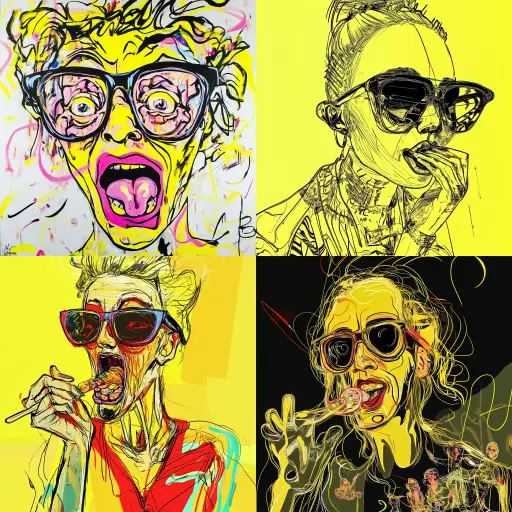Explore the Best AI Image Gallery

AI: The Artists New Muse - Reshaping the Graphic Design Landscape
The world of graphic design is undergoing a profound transformation, fueled by the rapid advancements in artificial intelligence (AI). No longer confined to the realm of science fiction, AI is becoming an indispensable tool for designers, empowering them with unprecedented capabilities and opening up exciting new possibilities. From automating tedious tasks to generating stunningly creative visuals, AI is redefining the very nature of graphic design.
Automating the Routine, Unleashing Creativity
One of the most significant impacts of AI on graphic design is its ability to automate repetitive tasks, freeing up designers to focus on more conceptual and creative aspects of their work. AI-powered tools can now handle tasks such as resizing images, generating basic layouts, creating color palettes, and even producing simple illustrations. This automation not only saves time and effort but also allows designers to experiment with new ideas and explore uncharted territories.
Generative Design: Where Imagination Meets Technology
Perhaps the most awe-inspiring aspect of AI in graphic design is its capacity for generative design. Using algorithms and vast datasets, AI can generate unique and original designs that would be difficult or impossible for humans to conceive. Designers can provide AI with specific parameters, such as style preferences, target audience, and desired message, and the AI will then produce a range of design options to choose from. This opens up a world of possibilities for creating truly innovative and personalized visuals.
The Human Touch: Collaboration, Not Replacement
While AI is undeniably transforming graphic design, its important to remember that it is a tool to augment human creativity, not replace it. The human element remains essential in guiding the AI, providing creative direction, refining the output, and ensuring that the final designs resonate with the intended audience. Ultimately, the most compelling designs are born from a collaborative partnership between AI and human designers.
Ethical Considerations: Navigating Uncharted Territory
As with any powerful technology, the integration of AI into graphic design raises ethical considerations that need to be carefully addressed. One key concern is the potential for bias in AI algorithms, which can perpetuate existing societal stereotypes and inequalities. Its crucial to ensure that AI-powered design tools are trained on diverse datasets and that human oversight is in place to mitigate bias. Another important consideration is intellectual property rights. Who owns the copyright to designs generated by AI? This is a complex legal question that is still being debated.
Future Trends: A Glimpse into the AI-Powered Creative World
The future of graphic design holds immense promise, with AI playing an increasingly central role. We can expect to see:
- More sophisticated generative design tools that can create even more complex and nuanced visuals.
- Personalized design experiences where AI tailors designs to individual preferences and needs.
- Seamless integration of AI into design workflows, allowing for faster and more efficient creative processes.
- The emergence of new design disciplines that leverage the power of AI, such as AI-assisted storytelling and immersive design experiences.
Conclusion
AI is ushering in a new era for graphic design, empowering designers with unprecedented tools and possibilities. By embracing this transformative technology while addressing the ethical considerations, we can unlock a future where creativity knows no bounds.












](https://images.ai-img.art/thumbnails/150/f67d9af3398150f2ab1bcf250717fea134275e2ca896252b54a4d9bb3719f9ac.webp)



](https://images.ai-img.art/thumbnails/150/bddf3ae4a232290858389b933c866ad3be429ef2e25c23a9f4d7713ed6e44d0b.webp)





](https://images.ai-img.art/thumbnails/150/4289d1230b86a96c4d556636c3167bed0ef38f850826549517e4e45db4d87bf7.webp)


](https://images.ai-img.art/thumbnails/150/f9584153b4cddd8c9fab611dc10247549b275c59bc173251e37d0935874f9deb.webp)







](https://images.ai-img.art/thumbnails/150/008b5d5d49667cc2e93a5f8a8adfaa545963da99c39ff0901f5296294636400d.webp)





](https://images.ai-img.art/thumbnails/150/c2c9c48b38fae37f0a457b80b084ed01ba803810fc8f488c8f610c03abc74049.webp)

